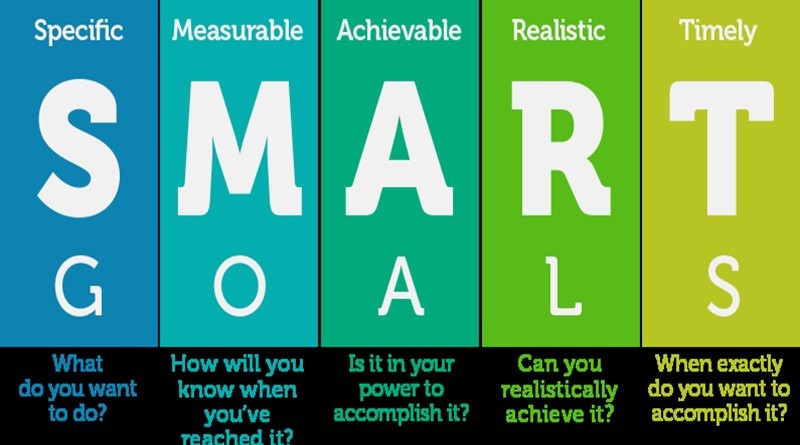How to Set SMART Sales Goals by Denise Stephan, Crunchbase
How to set SMART sales goals

As a salesperson, it’s important to be SMART about your sales goals. SMART is a well-known industry acronym for sales goals that are Specific, Measurable, Attainable, Realistic and Timely.
Specific: One of the biggest pitfalls in setting sales goals is not being specific enough. Rather than setting a goal to increase sales revenue, establish clear guidelines by attaching a number and timeline to it.
For example, when Apple released its sales goals for the first quarter in the fiscal year of 2018 in a press release, it noted that it wanted to increase revenue to between $84 billion and $87 billion while keeping operating expenses between $7.65 billion and $7.75 billion.
These concrete numbers were specific to keep the organization more accountable in pursuing its sales goals. When you do this, it will give you a better target to work toward.
Measurable: It’s hard to measure growth and success without tangible numbers. Use a measurement to outline your sales goals. For example, a goal could be to generate 25 new leads in the next quarter.
Ahlem Mahroua, the founder of beeHYPE Marketing, set the perfect sales goals by noting that she wanted to “add €15K (approximately $18,000) in billed revenue to our business in the second quarter by acquiring five new clients. To acquire five new clients, we will talk to 50 new leads by attending two networking events per week in Barcelona during April, May, and June.”
Attainable: While it’s fantastic to dream, you shouldn’t set a goal that’s impossible to reach. A goal should be a balance of something you have to work hard for yet is achievable. If you’re running a startup, one of your first sales goals could be to land two clients, instead of 20, within your first month of being a business.
Realistic: Similar to being attainable, your sales goals should be realistic. No powerhouse company became a household name overnight. Growth takes time, so don’t rush to set impractical goals. Replace the idea of becoming a multimillion-dollar business now with the goal of expanding your product or service in six months with three tangible new features your team has developed.
Timely: One of the most important facets of being smart about your sales goals is setting concrete deadlines. Establish a date or firm length of time for each of your goals. This will help your sales team maintain productivity and make it easier to map out your task timeline.
Types of sales goals
Now that you know how to frame your sales goals, it’s time to actually create them. There are various types of sales goals to consider. One of the most obvious goals is set around revenue. You can make weekly and monthly goals for how much revenue your sales team should bring in as a whole – in addition to individual benchmarks. Within your revenue sales goals, you should review components such as margins (profit minus expenses) and efficiency.
When reviewing your existing customer base, you can set goals to manage churn rate, customer satisfaction, and customer lifetime value. For potential customers, you can look at the number of leads the team is working with and set goals for conversion − a “win rate,” per se.
Types of Sales Goals:
- Revenue-the amount of revenue you want to earn as a sales team or salesperson
- Margins-overall profit minus expenses
- Efficiency-the ratio of revenue to costs
- Churn Rate-the rate at which you reduce cancellations and increase renewals
- Customer Satisfaction-how happy your customers are with your product or service
- Customer Lifetime Value-customer loyalty over a period of time
- Win Rate-the rate at which sales leads convert into new clients
If you desire to gain new customers, you can set your sights on revenue and improving results for your new sales team. If your company has been around for over a year, you may want to consider changing your goals and focus on retaining customers.
When setting short-term goals, remember to keep your long-term vision in mind. Weekly, monthly and even annual sales goals should align with the overall vision of what you want your startup to be and what kind of impact you want it to have.
How Crunchbase can help
If you’re running a startup, it can be difficult for your sales team to generate new leads to meet your business’s goals. Crunchbase Pro offers an extensive database with custom filters so you can find potential leads. Crunchbase Pro can also track trigger events such as investments, IPOs and staff changes that often signal an opportune time to pitch your products or services. By monitoring potential leads, you can better reach your sales goals, from finding new clients to increasing revenue for your startup.
By Denise Stephan, Crunchbase
– Denise Stephan is on the Marketing team at Crunchbase.





Pingback: Top 5 Best Practices to Achieve Your Business Goals in 2021 – Free file Hosting